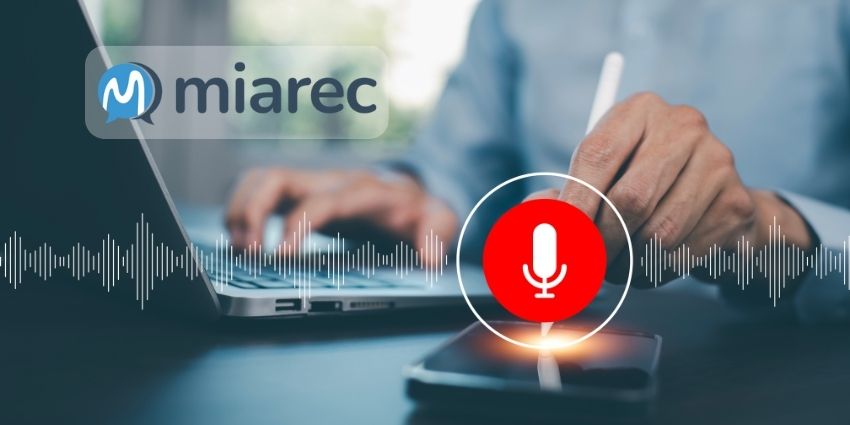For contact centers across industries of all kinds, taking detailed notes on customer interactions is essential. But taking notes during the call can be distracting, time-consuming, or even frustrating for agents.
Fortunately, recent advancements in AI, voice analytics, and natural language processing technology have helped make this easier with the introduction of automatic call summaries. Without further ado, let’s explore what automatic call summaries are, how they work, and the value they bring to businesses.
The Benefit of Automatic Call Summaries
Automatic call summaries are, as the name suggests, call recaps and notes automatically created during or after each call. However, they’re more than just transcripts—call summaries can identify and highlight key information, questions, and action items, making it easier for agents to find important notes and details for their records.
While there are several benefits to automatic call summaries, the greatest values will vary depending on where your priorities lie. Agents and business owners will each see different benefits to the technology, while helping everyone across the business.
For contact center agents and managers, automatic call summaries save time, reduce distractions, and improve overall efficiency. During the call, agents can focus completely on the conversation, rather than having to divide their attention between their notes and the customer. This keeps them more engaged and focused during the conversation, which in turn increases their efficiency and keeps the call handle times down. In fact, it even reduces the stress on the agent by giving them less to worry about during and after each call.
At the same time, automatic summaries save time after the call by eliminating the need to manually write post-call notes. Many contact center solutions with AI-powered call summaries also have CRM integrations that automatically log the calls and attach the summaries.
Additionally, as the summaries are automatically provided by AI, they’re often better at providing objective, unbiased overviews than human agents. They also tend to be more thorough, as they can avoid human error and simple mistakes (like an agent forgetting a detail after the call).
In short: automatic summaries help keep agents focused, engaged, and motivated, while reducing stress and call durations.
This, in turn, can benefit the business itself. Agent turnover is a major problem for many contact centers, and the biggest cause of turnover is unhappy and stressed-out agents. So, by minimizing stress and improving efficiency, companies using automatic call summaries can also improve agent satisfaction and retention.
At the same time, these tools improve productivity by empowering agents and making them more efficient. This leads to more successful calls and happier customers.
Altogether, these factors add up to savings across the board—they save businesses the expenses that come with losing and replacing agents, save agents time that would be spent on lengthy calls and writing notes, and retain customers by providing superior support.
Uses For Automatic Call Summaries
While businesses of all kinds can benefit from automatic call summaries, the specific use cases will vary across industries.
Businesses whose sales teams use automatic call summaries can easily review key points and action items from calls with customers or prospects, which can help in following up with leads and closing deals. This, in turn, leads to tangible improvements in ROI, with teams making more sales in less time.
Customer support teams can also use call summaries to understand customer needs at a glance, track problems to their resolutions, and identify common trends or issues. Call summaries are also useful for reviewing performances and ensuring compliance, as automatic summaries provide an impartial look at each call.
For both sales teams and contact centers, one other major benefit is how the time saved translates to ROI. Organizations can calculate how much they’re saving with automatic call summaries by identifying how much time each agent saves per call with automatic summaries, how many calls they take each month, and how much their hourly wage is—a task made quite easy using the ROI calculator from MiaRec.
As an example, according to MiaRec’s calculations, a contact center with 1,000 contact center agents, who handle around 1,000 calls a month and take approximately 5 minutes to create call summaries manually, can save around 83,300 hours each month with automatic call summaries. If each agent is paid $15 an hour, that’s approximately $1,249,500 worth of time saved monthly!
Companies in the legal field can use automatic call summaries to easily take notes from client calls and consultations, ensuring they document everything properly. Additionally, compliance teams can use the summaries to monitor discussions and maintain records, making sure that everyone is adhering to their regulations.
This also extends to the healthcare field, as doctors can use automatic call summaries to track medical histories, treatment plans, and prescriptions after each patient consultation. As telemedicine has become more ubiquitous, call summaries are also excellent tools for remote healthcare providers, as they can help maintain patient records.
Of course, any business that holds meetings and conferences can benefit from automatic call summaries as well. Call summaries are important for helping participants review decisions, action items, and discussions, so being able to automatically capture summaries helps ensure attendees have accurate records without needing to split their attention between the conference and notes.
Automatic Call Summaries in Action
Now that we understand what automatic call summaries are and the benefits they provide, let’s look at a great example of one such solution.
MiaRec is a contact center conversational intelligence platform that uses voice analytics and automated quality management to empower contact centers and their agents. The voice analytics provide speech-to-text transcriptions, which are then used to find additional insights, including:
- Sentiment analysis
- Topic analysis
- Automatic data redaction (to protect sensitive information)
- Call scoring
This information is key for contact centers and gathers important insights that call logs alone might not include.
Sentiment and topic analysis, for instance, are particularly helpful features, as they can glean insights into how customers are feeling, what customers are frequently calling about, and how agents are performing. By including this information along with the call summaries, they provide agents and managers with further knowledge about each call and customer.
Additionally, MiaRec includes a unique tool that helps them stand out above the crowd: its ROI Calculator. This is used to analyze the number of agents, calls, and call times to determine how much time and money contact centers save each month and year.
Using the ROI Calculator, MiaRec users can see how much time they’re losing by having agents take notes and write call summaries, then comparing it to the agents’ hourly pay and determining how much businesses save just by automating the summaries. Suffice to say, the numbers add up to significant savings.
It’s clear that automatic call summaries can provide several benefits to contact centers. They can save time and money, improve the contact center experience for customers and agents alike, and give agents an efficiency boost by eliminating a tiring and distracting task. Whether you’re a contact center agent, manager, or business owner, there’s value to be found in automatic call summaries.






